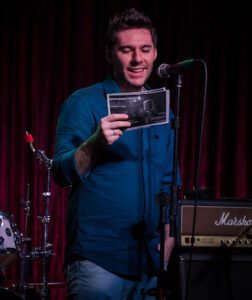Many people are resistant to singing with vocal feedback systems (whether in studio environments or in live situations) because they have been told at some point that the microphone changes their voice .
Is this really true?
Well, first of all we would like to point out that adjusting vocal feedback so that a person feels comfortable singing is an art. And it depends a lot on the singer himself and the technician who is operating the devices.
This is because some people like to sing with the vocal return at a very high volume, others like to sing with it more “inside” the instruments; some singers like to rely on a specific instrument (usually piano, guitar or guitars) and prefer those instruments to be louder in their returns. Some people still like their feedback to have reverb and delay effects while others prefer their feedback to be very “dry”. The variables can be endless…
A not very good adjustment of the return can make the singer (even a professional one) feel really uncomfortable and this can seriously impair his performance.
So does the microphone really change our voice?
We are considering here in our posts equipment of a minimum quality. It is more or less obvious that that microphone that comes in the cheapest karaoke machines or built-in microphones of old cell phones and old computers is likely to deal with considerable frequency clipping and loss of dynamic range.
In another post, we already mentioned a pretty cheap microphone that helps many of our students study or make home recordings (Samson C01 Pro Usb – about $90). This is a recording microphone and will not work very well in a live context. A popular model for live situations is the Shure SM 58 (about $99). Others that work really well at a show or event are Shure’s Beta 58 ($160 or so), the Audio-Tecnhnica AE-4100 ($190 or so), and the Sennheiser e945 ($220 or so). If you want a mic for life, consider the Neumann KSM 105 ($700 or so).
Considering the equipment we talked about earlier and others of similar quality, the big problem is that most people don’t know how others hear them. That’s because when we hear ourselves without microphones, the vibrations of the vocal folds resonate in the throat and mouth and are transmitted to the inner ear by the bones of the head. This is different from a recording or when listening to other people’s voices – in this case, sounds reach our ears only through vibrations traveling through the air.
When we are listening to ourselves with a microphone at the same time as we are singing, it is true that we still have some transmission through the bones of the head, but we gain a much greater reference with the sound that comes from the speakers or headphones.
And how to find the ideal return for me?
As we said, equipment makes a lot of difference. Not only the microphones, but also the entire chain in which they are connected (pre-amplifiers, converters, compressors, equalizers and other effects) and the means through which you are hearing your voice (headphones or speakers).
But there’s one very important thing that most people overlook: the singer’s ability to communicate to the technician the way he wants this feedback to be set up. And here there is not much to escape from experience time : the more you sing with feedback, the more you know yourself as a singer, the more you rehearse and the more you record, the better your guidance to the technician will be.
So get away from this commonplace saying that “the microphone” changes your voice and that you don’t know how to sing into the microphone and rehearse more with feedback, and record yourself more. The first few times you do this, you will be surprised and probably not like the result, but as time goes by you will see that this is how you will become the singer you always wanted to be.

